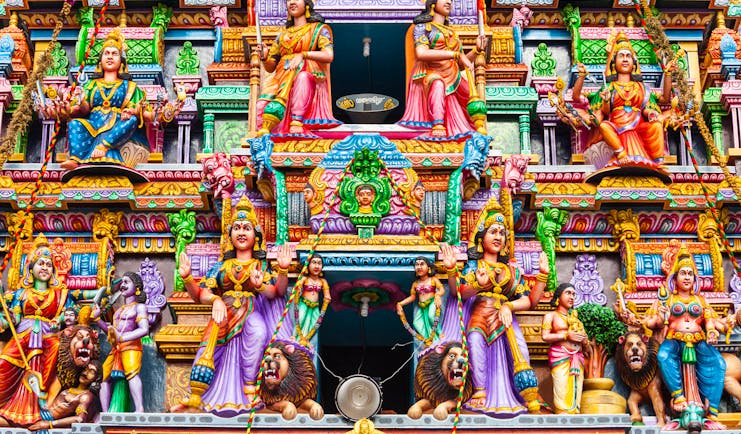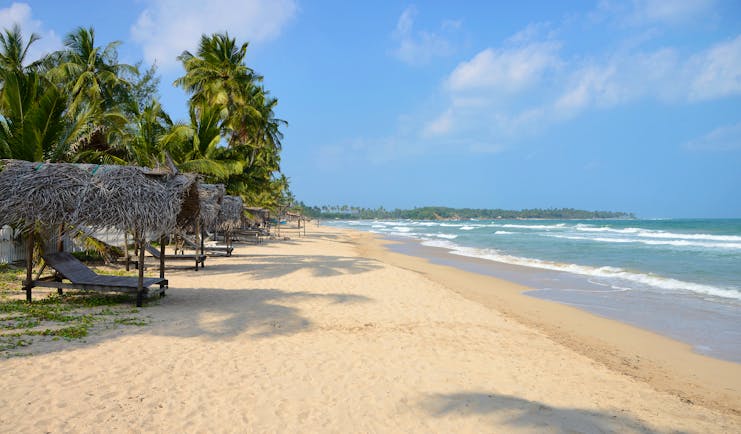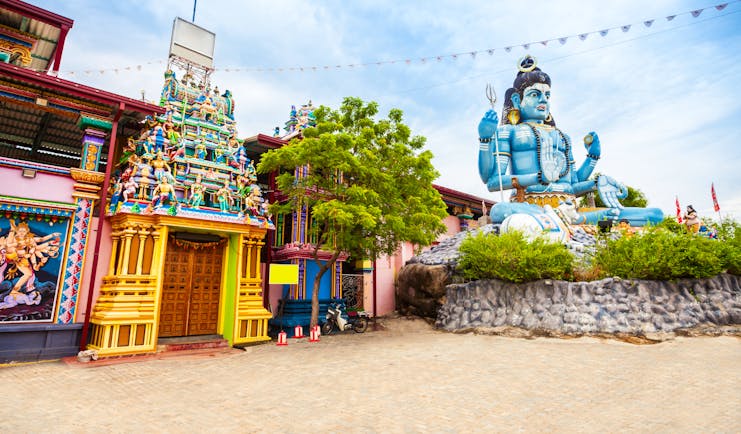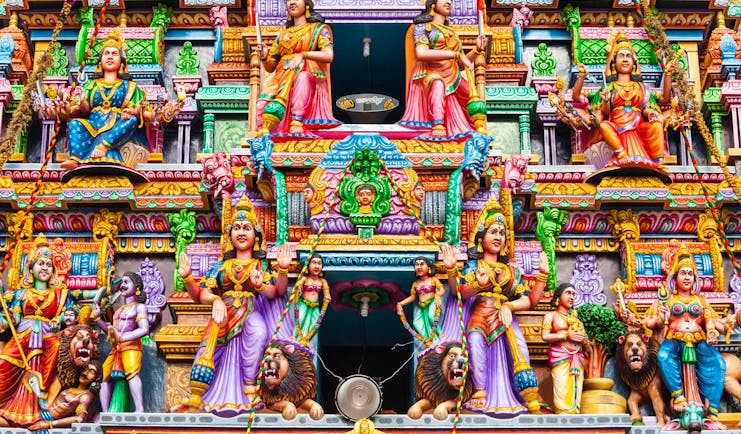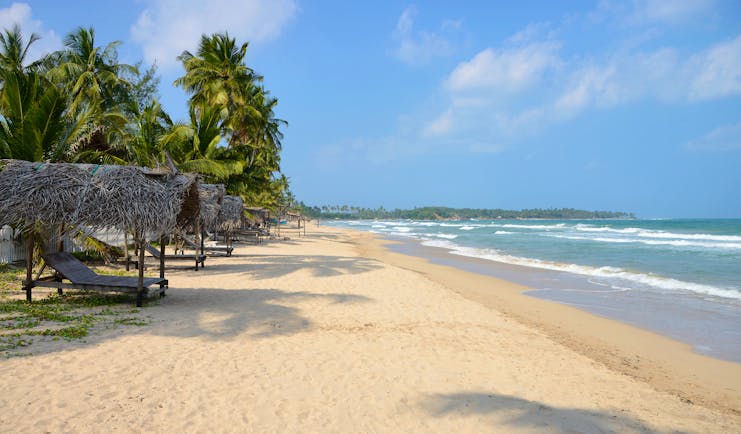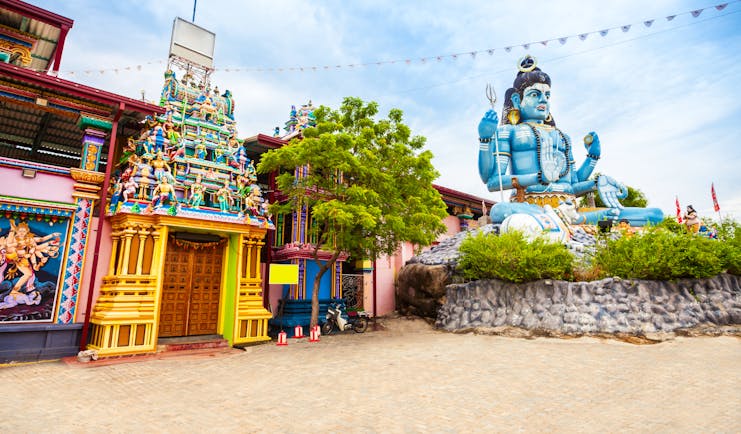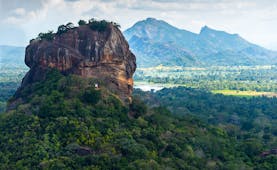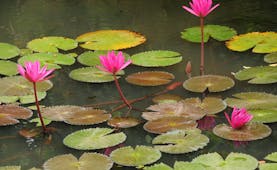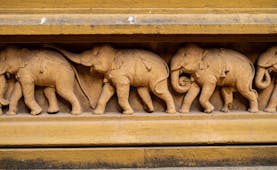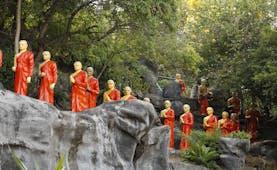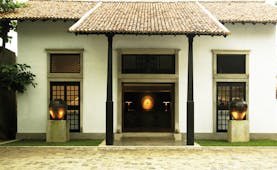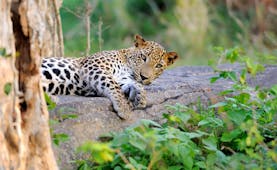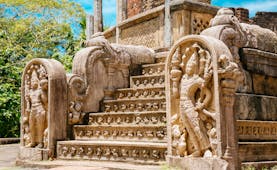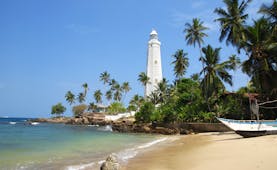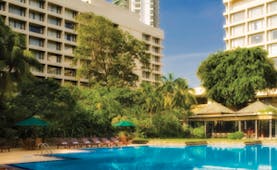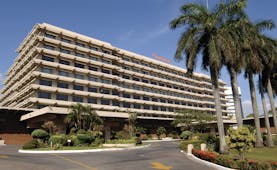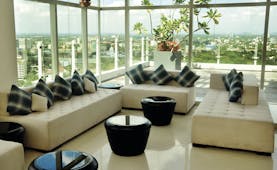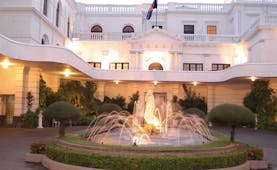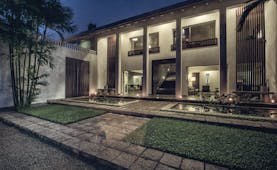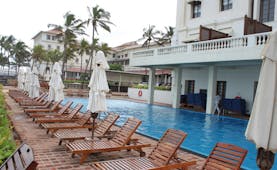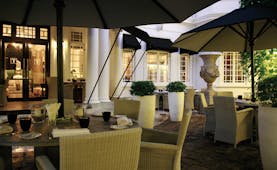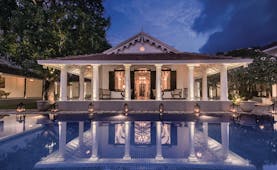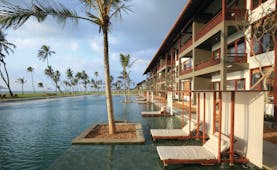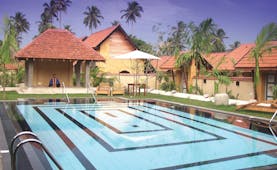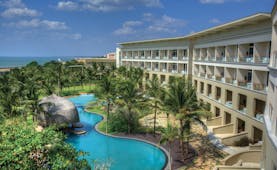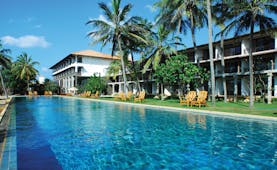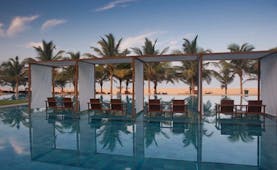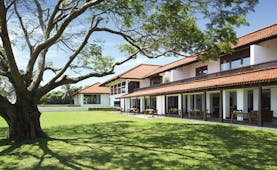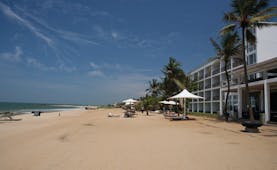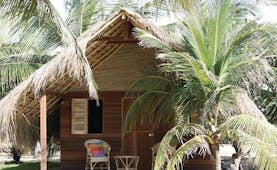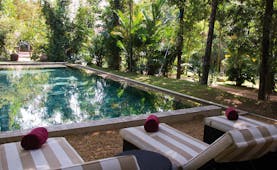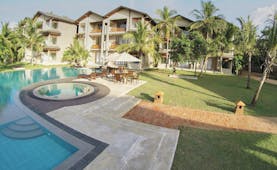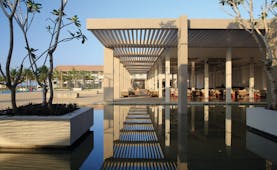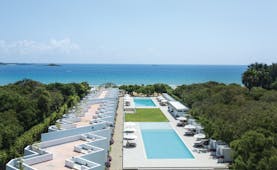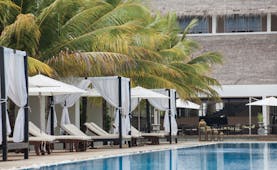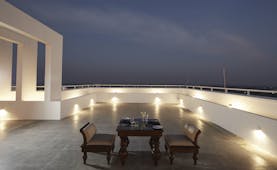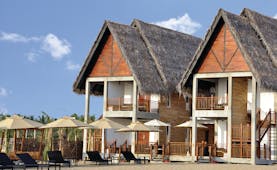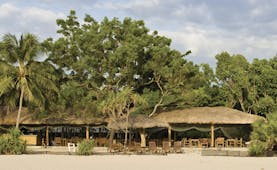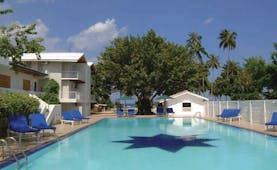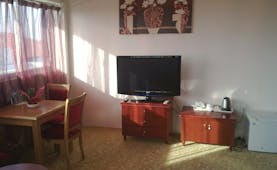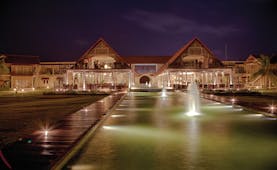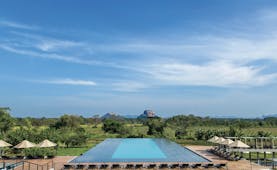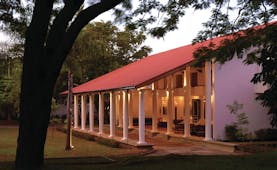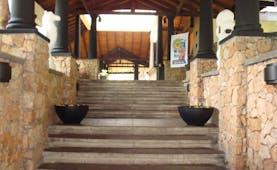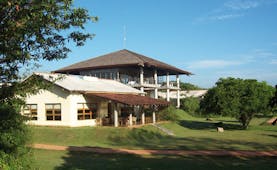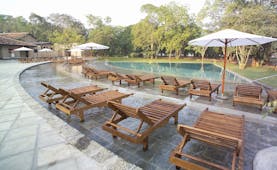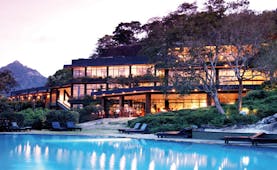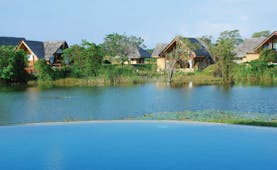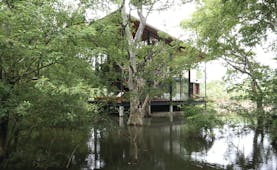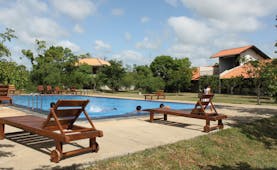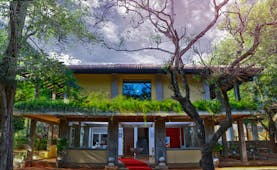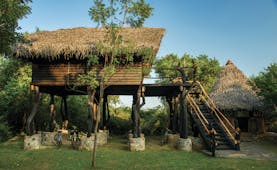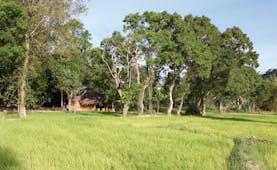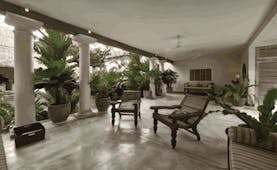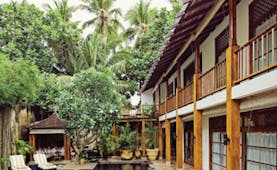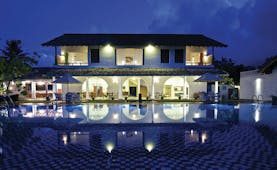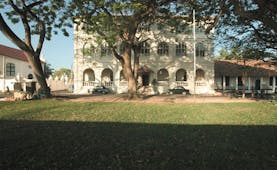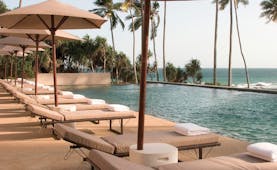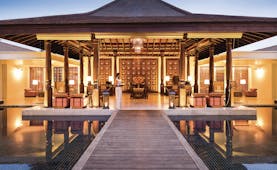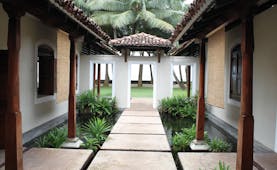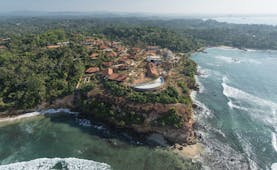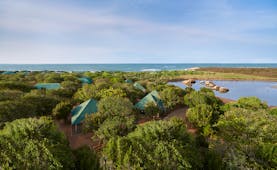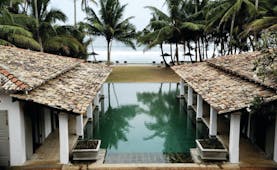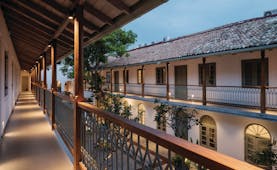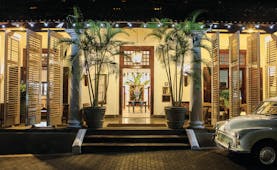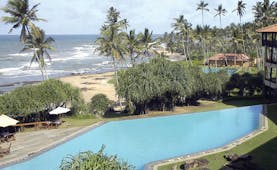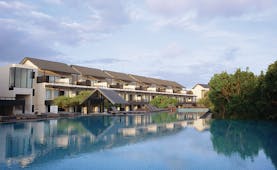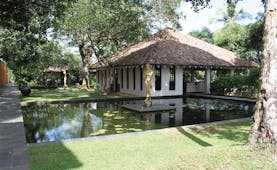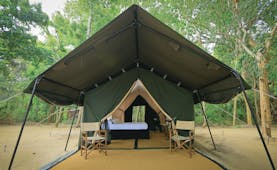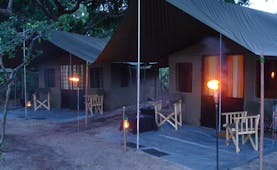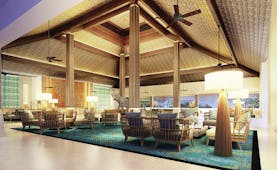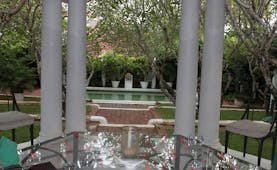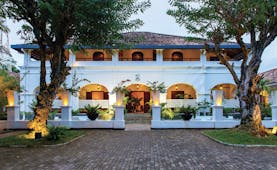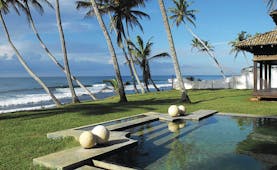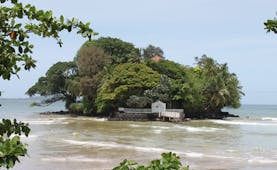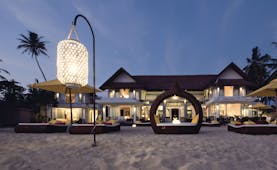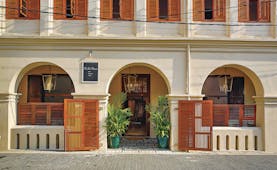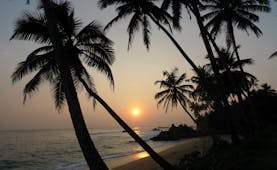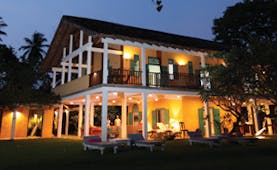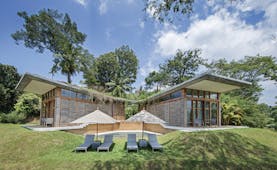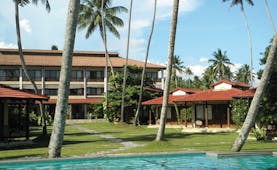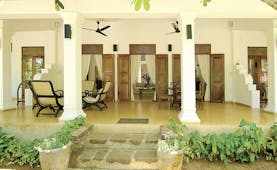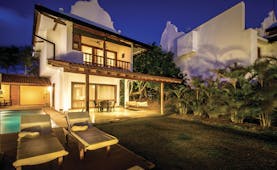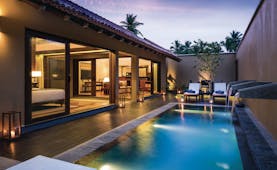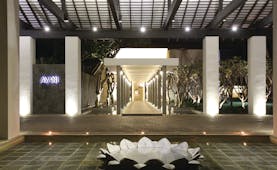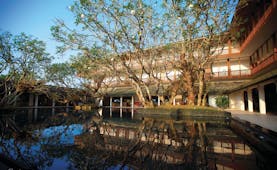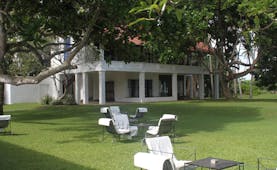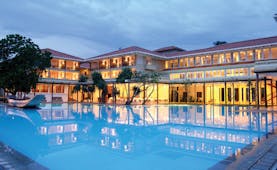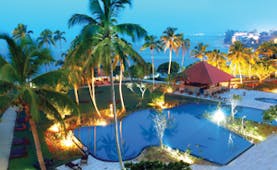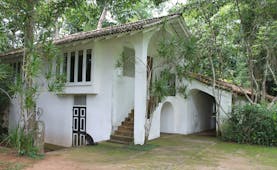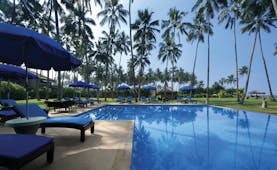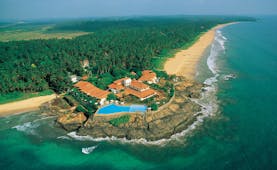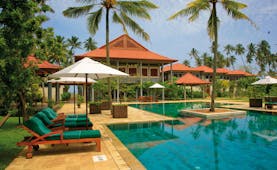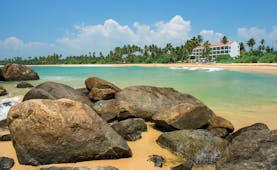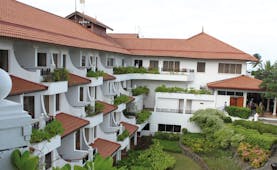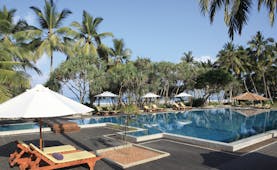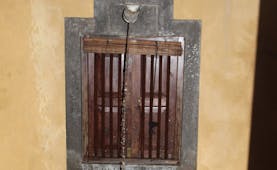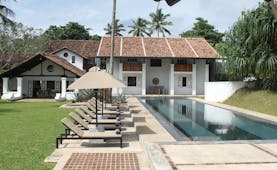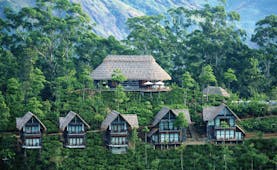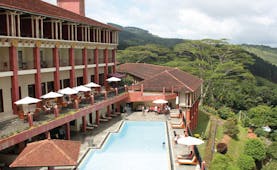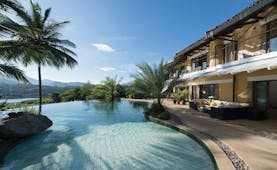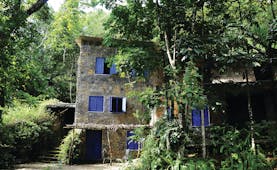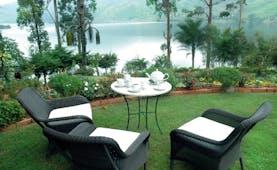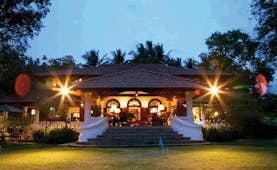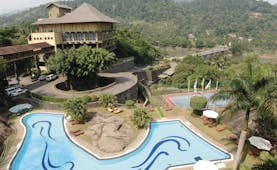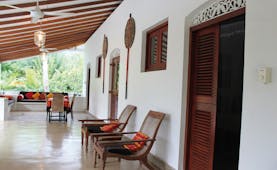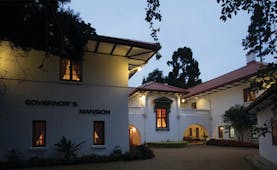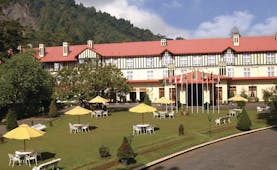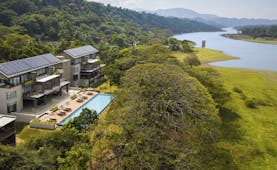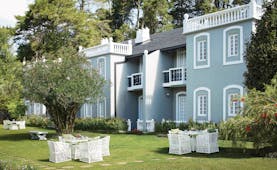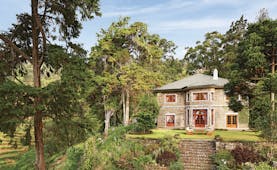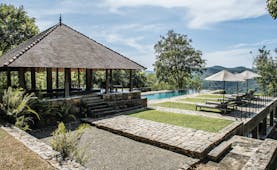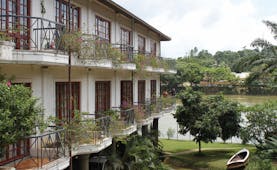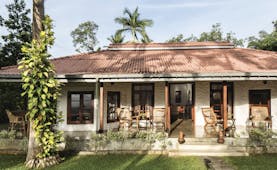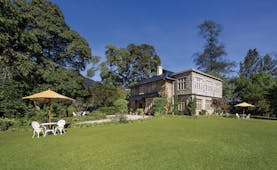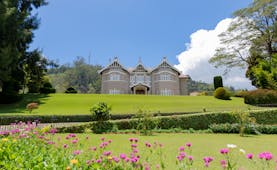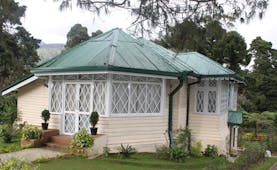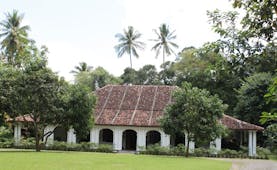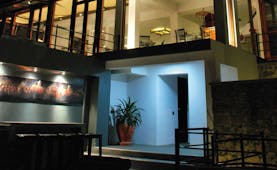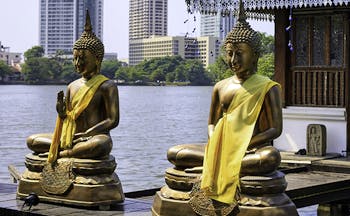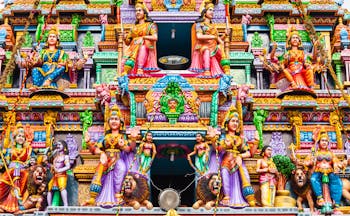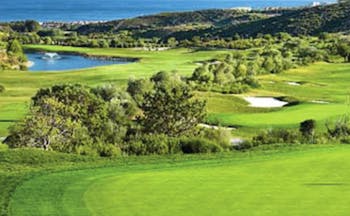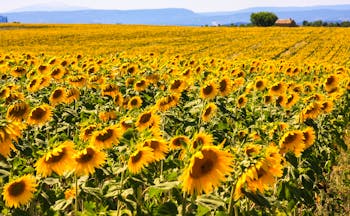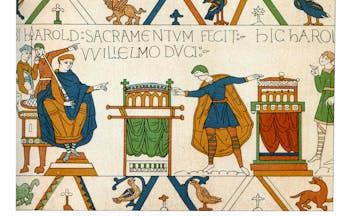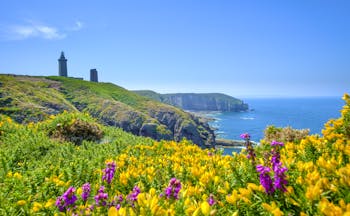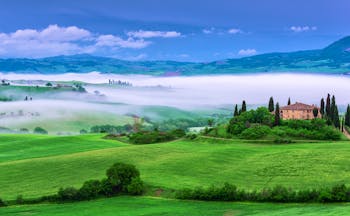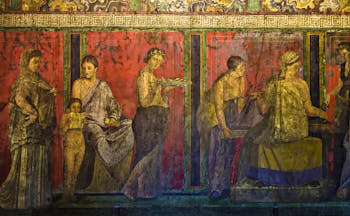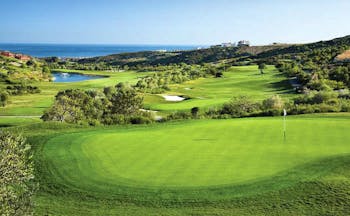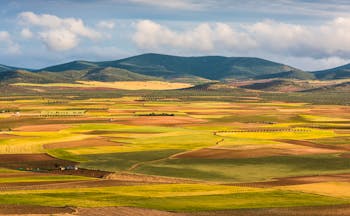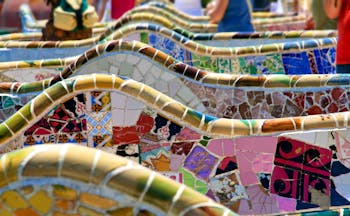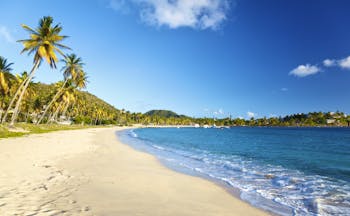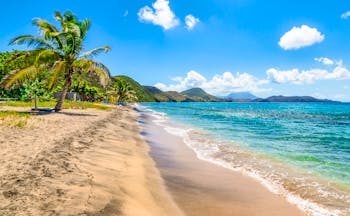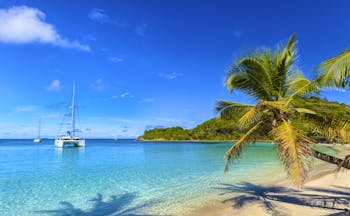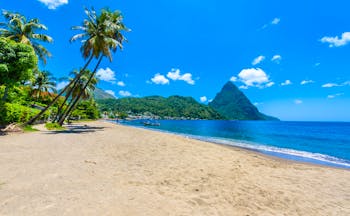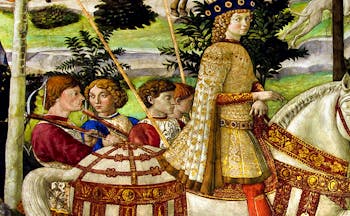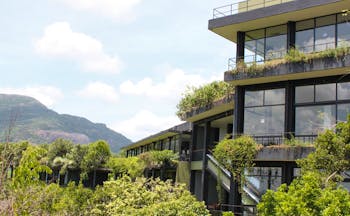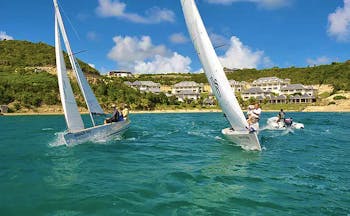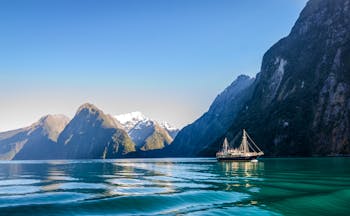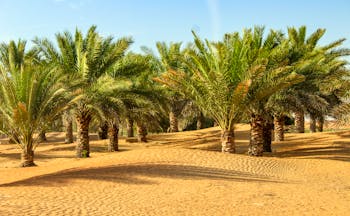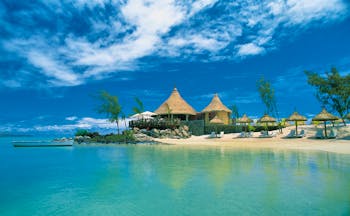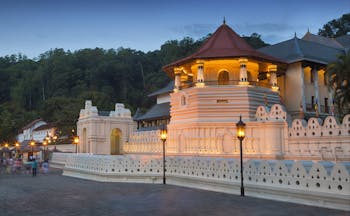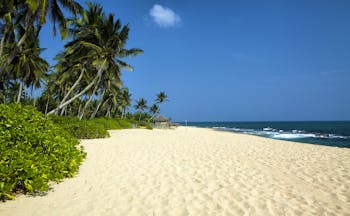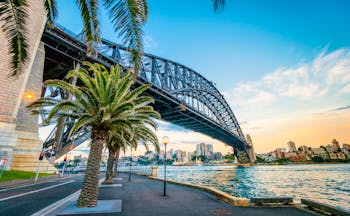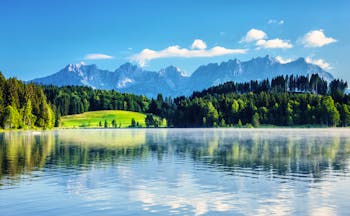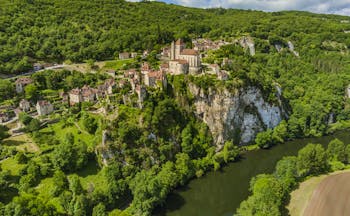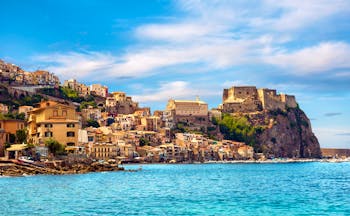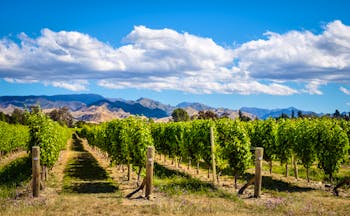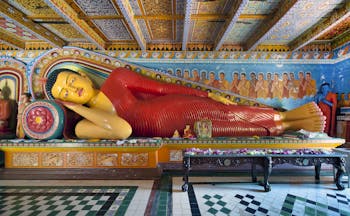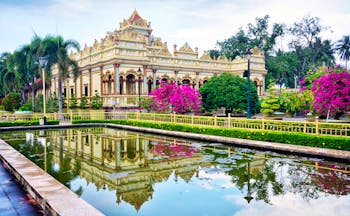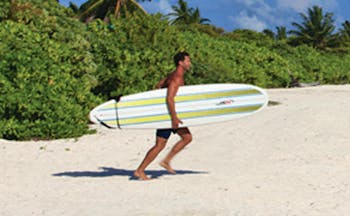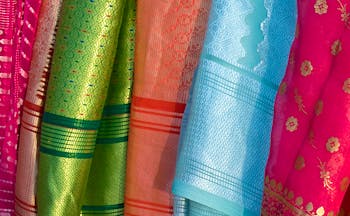Luxury touring holiday with driver-guide of Sri Lanka's north and north-east uncovering the rich heritage of Jaffna, its hinterland and the coast of Trincomalee
This 8-night tour of the less well-known regions of northern Sri Lanka starts from Colombo airport, where you are met by your driver-guide. The first night allows you to acclimatise and explore the Sri Lankan capital, Colombo, before embarking on the full day’s drive to Jaffna, situated on the northernmost tip of the country and close in heritage and culture to southern India. Settled by Tamils over many centuries, as well as being colonised by the Portuguese, the Dutch and the British, Jaffna and being closer physically to India than to Colombo, Hinduism is the dominant religion here and the language Tamil, not Sinhalese. The region has re-opened in recent years after decades of civil war and despite the strife of those violent decades, there is an unmistakeable character and beauty. The area is very much undeveloped and the countryside and coast natural. The area is very much undeveloped and the countryside and coast natural. You spend three nights in Jaffna exploring the town, the hinterland and the nearby islands. Then you head south along the eastern coast to Trincomalee, one of the oldest cities in Asia, possessing a fine deep-water harbour, and an important centre for Tamil culture. Whale and dolphin-watching is in season here from May to October and sea swimming is best on the east coast during these months.
Highlights
Colombo • Jaffna • Nagadeepa • Delft • Trincomalee • Pigeon Island
Day by day
You will be met on arrival and driven by your English-speaking chauffeur guide who will accompany you throughout your tour of Sri Lanka. Transfer to the Uga Residence, boutique hotel, in Colombo for one night (approximately 1 hour). Spend the rest of the day at leisure, under your own steam, perhaps with some sightseeing and shopping in Colombo. The Pettah area, which is in the heart of Colombo, is a beehive of activity with traders and hawkers selling some great bargains. It may also be possible to visit one of the world’s leading tea auctions, seasonal Buddhist and Hindu pageants or a cricket tournament.
After breakfast, depart for Jaffna in the far north of Sri Lanka. The journey time by road is about eight hours. (It is possible to get to Jaffna by private flight or by road with an overnight stop. We will go through these options with you to discuss your preference at the time of booking). Jaffna has remained a mysterious destination. Very little was known about this iconic city due to the 30-year civil war. Jaffna is etched with a rich heritage and history with breath-taking scenery and monuments. Sightseeing will include Jaffna Fort, the library and Nilawari, a bottomless well where it is said that the Hindu God, Rama, shot an arrow to get water. Stay at the Jetwing Jaffna Hotel for 3 nights.
In the morning, take a public ferry trip with your guide to Nagadeepa. This is one of the most recognised landmarks in the area. It is believed that Lord Buddha had visited Nagadeepa to settle a dispute between two Naga Kings, Chulodara and Mahodara. After hearing Lord Buddha’s sermon, they offered him the throne. You will have the chance to visit a few Hindu Kovils in Nagadeepa, and in the afternoon head to the Keerimalai natural pond.
Today you will be taken by public ferry to Delft, which was named by the Dutch after the town in The Netherlands. This island still has evidence of the Dutch and Portuguese presence in the area. Sightseeing on a trishaw will include the Dutch and Portuguese forts, Hindu temple, Delft hospital and the baobab tree. If you are lucky enough, you will also get the chance to see wild horses. In the afternoon, visit Casuarina Beach which is one of the best beaches in the Jaffna area.
Today you will be taken to Trincomalee by road (approximately 4.5 hours). Later, enjoy some sightseeing in one of the world’s best natural deep-water harbours that has attracted sea farers such as Marco Polo to Dutch and British colonial explorers. Visit Trinco’s harbour, Swami Rock and the seven hot springs of Kanniya. Check-in to the Jungle Beach Hotel for 3 nights, 30 minutes’ drive from Trincomalee.
In the morning, enjoy a boat trip to Pigeon Island, about 30 minutes from the mainland. This rocky islet got its name from the large number of blue rock pigeons that breed here. It is famous for its corals and colourful fish. Spend the afternoon at leisure or on the beach.
Early in the morning, embark on a whale and dolphin-watching trip by boat (from May to October only). You are back at your hotel for the afternoon of further sightseeing on your own or relaxation.
This morning, an early departure from Trincomalee by road for the 6-hour journey to Colombo. We have included the last night in Negombo, just north of Colombo because of the timings, but you could break the journey en route and stay at Dambulla for example, but with the flight timings, you would still need an early departure from the hotel to check-in for the flight.
Check-out this morning and transfer to the airport (about 20 minutes’ drive).
E was extremely well-informed about Sri Lanka and quickly understood our wish for a customized Bawa tour. He was unfailingly patient and helpful, and contributed greatly to the final agreed itinerary. I highly valued all his input and advice.Ms B, March 2025
Holiday price guide From £3,990 per person based on two people sharing a double room and including for economy flights from London.
Holiday Code SLDG07
Call us on 01392 441245
Luxury touring holiday with driver-guide of Sri Lanka's north and north-east uncovering the rich heritage of Jaffna, its hinterland and the coast of Trincomalee
You will be met on arrival and driven by your English-speaking chauffeur guide who will accompany you throughout your tour of Sri Lanka. Transfer to the Uga Residence, boutique hotel, in Colombo for one night (approximately 1 hour). Spend the rest of the day at leisure, under your own steam, perhaps with some sightseeing and shopping in Colombo. The Pettah area, which is in the heart of Colombo, is a beehive of activity with traders and hawkers selling some great bargains. It may also be possible to visit one of the world’s leading tea auctions, seasonal Buddhist and Hindu pageants or a cricket tournament.
After breakfast, depart for Jaffna in the far north of Sri Lanka. The journey time by road is about eight hours. (It is possible to get to Jaffna by private flight or by road with an overnight stop. We will go through these options with you to discuss your preference at the time of booking). Jaffna has remained a mysterious destination. Very little was known about this iconic city due to the 30-year civil war. Jaffna is etched with a rich heritage and history with breath-taking scenery and monuments. Sightseeing will include Jaffna Fort, the library and Nilawari, a bottomless well where it is said that the Hindu God, Rama, shot an arrow to get water. Stay at the Jetwing Jaffna Hotel for 3 nights.
In the morning, take a public ferry trip with your guide to Nagadeepa. This is one of the most recognised landmarks in the area. It is believed that Lord Buddha had visited Nagadeepa to settle a dispute between two Naga Kings, Chulodara and Mahodara. After hearing Lord Buddha’s sermon, they offered him the throne. You will have the chance to visit a few Hindu Kovils in Nagadeepa, and in the afternoon head to the Keerimalai natural pond.
Today you will be taken by public ferry to Delft, which was named by the Dutch after the town in The Netherlands. This island still has evidence of the Dutch and Portuguese presence in the area. Sightseeing on a trishaw will include the Dutch and Portuguese forts, Hindu temple, Delft hospital and the baobab tree. If you are lucky enough, you will also get the chance to see wild horses. In the afternoon, visit Casuarina Beach which is one of the best beaches in the Jaffna area.
Today you will be taken to Trincomalee by road (approximately 4.5 hours). Later, enjoy some sightseeing in one of the world’s best natural deep-water harbours that has attracted sea farers such as Marco Polo to Dutch and British colonial explorers. Visit Trinco’s harbour, Swami Rock and the seven hot springs of Kanniya. Check-in to the Jungle Beach Hotel for 3 nights, 30 minutes’ drive from Trincomalee.
In the morning, enjoy a boat trip to Pigeon Island, about 30 minutes from the mainland. This rocky islet got its name from the large number of blue rock pigeons that breed here. It is famous for its corals and colourful fish. Spend the afternoon at leisure or on the beach.
Early in the morning, embark on a whale and dolphin-watching trip by boat (from May to October only). You are back at your hotel for the afternoon of further sightseeing on your own or relaxation.
This morning, an early departure from Trincomalee by road for the 6-hour journey to Colombo. We have included the last night in Negombo, just north of Colombo because of the timings, but you could break the journey en route and stay at Dambulla for example, but with the flight timings, you would still need an early departure from the hotel to check-in for the flight.
Check-out this morning and transfer to the airport (about 20 minutes’ drive).
E was extremely well-informed about Sri Lanka and quickly understood our wish for a customized Bawa tour. He was unfailingly patient and helpful, and contributed greatly to the final agreed itinerary. I highly valued all his input and advice.Ms B, March 2025
Holiday price guide From £3,990 per person based on two people sharing a double room and including for economy flights from London.
Holiday Code SLDG07
Our prices include
● Return scheduled flights with British Airways or Sri Lankan Airlines to Colombo in economy class
● 1 night’s bed and breakfast in Colombo
● 3 nights’ bed and breakfast in Jaffna
● 3 nights’ bed and breakfast in Trincomalee
● 1 night’s bed and breakfast in Negombo
● Private English-speaking chauffeur-guide in an air-conditioned Japanese car throughout the itinerary
● Entrance fees to the monuments listed
● Concierge service and Expressions Holidays regional helpful hints
Our prices do not include
● Visas (A visa is a requirement for entry to Sri Lanka and can be obtained on line from www.eta.gov.lk)
● Early check-in or late check-out at any hotels (although we can arrange this on request at additional cost)
● Any other services not mentioned above, such as transfers and meals except breakfast at hotels
● Personal holiday insurance. This is essential and cover should be in place from when you book the holiday.
● Local tourist tax, payable locally to the hotel
● Camera fees where applicable
● Optional excursions – to be pre-booked and at a supplement
Call us on 01392 441245
Luxury touring holiday with driver-guide of Sri Lanka's north and north-east uncovering the rich heritage of Jaffna, its hinterland and the coast of Trincomalee
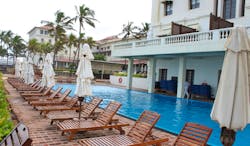
The Galle Face Hotel is a 5-star hotel offering the utmost in colonial-style luxury, in an excellent beachfront location. Opulent accommodation, excellent spa facilities, delicious cuisine and exemplary service maintain the property's position as an icon of Colomban luxury.
Superior
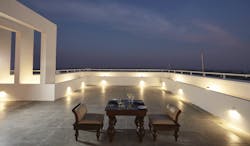
Jetwing Jaffna is a 4-star boutique hotel, offering a contemporary contrast to the more rustic inland hotels in an excellent location in one of Sri Lanka's most culturally dynamic areas. The rooftop bar with its stunning coastal views is unmissable!
Deluxe room
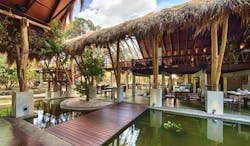
Uga Jungle Beach is a luxury boutique in a beautiful location, nestled between the trees and the Indian Ocean. Guests can delight in excellent cuisine and spa facilities in this sublimely secluded spot.
Lagoon cabin
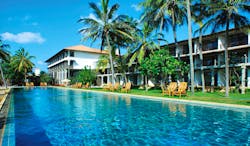
Jetwing Beach is a luxury 4-star boutique hotel in a beautiful coastal location. Excellent spa facilities and a wide variety of dining facilities - including the unmissable signature dining experiences - afford guests a relaxing and idyllic experience.
Deluxe room
E was extremely well-informed about Sri Lanka and quickly understood our wish for a customized Bawa tour. He was unfailingly patient and helpful, and contributed greatly to the final agreed itinerary. I highly valued all his input and advice.Ms B, March 2025
Holiday price guide From £3,990 per person based on two people sharing a double room and including for economy flights from London.
Holiday Code SLDG07
Call us on 01392 441245
Luxury touring holiday with driver-guide of Sri Lanka's north and north-east uncovering the rich heritage of Jaffna, its hinterland and the coast of Trincomalee
About Colombo
Sri Lanka's capital, Colombo, has gradually grown from humble beginnings as a tiny 5th century trading post for gems to become Sri Lanka’s largest city and its most important port. The island’s commercial capital is a hectic mix of old and new, colonial architecture sitting next to modern glass and tree-lined residential suburbs bordered by shacks. Nifty 3-wheelers and the occasional bullock cart vie with noisy buses and 4-wheel drives for supremacy on the streets. There is a lot to see and explore during your stay in Colombo. To the north of the city is Fort, a business area with shops and offices and touches of residual colonial charm. The fort which gave the district its name has long since gone, though the Lighthouse Clock Tower in North Chatham Street and the 18th century ‘Queen’s House’, now the president’s official residence, still exist. To the south is Galle Face Green, a sea-front expanse of green lawn beside an esplanade which is used to host race meetings and sports events and is a popular gathering place, especially for kite-flying or a sunset stroll. At its south end stands the colonial Galle Face Hotel, the oldest hotel in Colombo which was built in 1864. Further south is Cinnamon Gardens, the city’s most fashionable neighbourhood with tree-lined streets and colonial mansions. A small national art gallery borders the pleasant Viharamahadevi Park. The National Museum, on Albert Crescent, has a collection ranging from religious bronzes to possessions of the last Kandyan kings. All around the city, Buddhist temples, Hindu Kovils, mosques and churches give a glimpse into the spiritual vibrancy of Sri Lankan life, especially during religious festivals. Gangaramaya Buddhist temple, in particular, is fascinating for any visitor, as well as the Hindu Temple at Sea Street which is lined with goldsmith's shops, the Dutch Church at Wolfendal, dating back to 1749 and the historic Davatagaha Mosque. Colombo also offers some excellent shopping opportunities: the lively Pettah Bazaar competes with shopping malls and fashion stores and you can buy anything from gems to cricket bats. Stores such as Barefoot, Paradise Road, Gandhara and Odel have a designer-chic range of home ware, fabrics, arts & crafts and clothes.
Highlights of Colombo
Fashion, jewellery, art, trendy homeware and Sri Lankan arts and crafts; Golf at Royal Colombo golf course; National Museum; Variety of restaurants; Afternoon tea or cocktails on the Ocean terrace of the Galle Face Hotel; Walking along the seafront at Galle Face Green; Pettah Bazaar; Buddhist temples (Gangaramaya, Bellanwilla); Colourful Hindu Kovils (Sri Subramaniam and Kailawasanthan Swamidevasthanam, the oldest); Dutch period museum. Near Colombo – Kelaniya Raja Maha Temple; Nightclubs and musical entertainment e.g. jazz, Asian pop bands, calypso, (mainly in the hotels).
Festivals in Colombo
Navam Perahera held in February is a 3-day pageant ending on Poya day (full moon), with dance troupes and decorated elephants, at Gangaramaya temple and along neighbouring streets.
Climate in Colombo
Colombo has an average temperature of 27° C, often reaching above 30° C during the day, slightly cooler in the evenings and during the monsoon season (May to August). It is hot and sticky, less so on the seafront with the sea breezes.
Travel around Colombo and Sri Lanka
We include private transfers with all our holidays to Sri Lanka, and a personal chauffer with all our touring holidays. Driving Distances: Colombo to Colombo International airport: 1 hour Colombo to Bentota: 2 hours, Colombo to Galle: 2 hours, Colombo to Kandy: 3.5 hours, Colombo to Dambulla: 4 hours.
Call us on 01392 441245
Luxury touring holiday with driver-guide of Sri Lanka's north and north-east uncovering the rich heritage of Jaffna, its hinterland and the coast of Trincomalee
About North and north east
An Expressions tailor-made holiday to the north region of Sri Lanka allows travellers to explore a less popular region of the beautiful and diverse country. Strewn with Hindu temples and colonial gems, with long white beaches, mangrove lagoons and spectacular snorkelling, Sri Lanka’s far north and eastern coast has been denied to tourists by years of unrest, but with peace restored and hotels reopening, the region now welcomes visitors with a warmth and enthusiasm kindled by decades of isolation. We are thrilled to be adding this fabulous region to our Sri Lanka programme. Marooned at the very northern tip of Sri Lanka on a peninsula that reaches out both physically and culturally towards India’s Tamil south only 50-odd miles across the Palk Strait, Jaffna is the capital of the north, bustling again after years of reluctant quiet. An utterly intriguing city, Jaffna is littered with intriguing glimpses of its turbulent past, a place where Anglican churches and cathedrals all but rub shoulders with Hindu temples and mosques. Bursting with colour, the city centre has recaptured its joyous buzz, with the cricket games played on dusty maidens and the roadside market stalls groaning beneath towers of mangoes emblematic of the city’s rebirth. Down the east coast, Trincomalee, or Trinco as it is affectionately known in these parts, is a pretty harbour town still echoing a thriving colonial past. Increasingly known as a whale-watching and diving destination, sperm and blue whales come into the bay through deep underwater canyons, Trinco is also the gateway to a string of spectacular, palm-fringed beaches to its south. Of these, the remarkably undeveloped but achingly beautiful Passikudah is perhaps our favourite, and lying only 40 miles east of Polonnaruwa, it offers a stunning beach-extension to Sri Lanka’s magnificent Cultural Triangle.
Highlights of the north east region of Sri Lanka
The capital city of Sri Lanka’s Northern Province, Jaffna, is quietly re-emerging from its imposed civil-war stance as hub of the Tamil rebellion. Although visual scars of the fighting still remain, there are a number of treasures to seek out, not least the lively bazaar where gold and beautiful Indian saris make for a perfect purchase. Once home to many rare and historical manuscripts relating to the history of ancient Sri Lanka, the Jaffna Library was ravaged by fire in the 1980s at the height of the unrest, with many ancient books subsequently lost ad infinitum. Reopened in 2003, the library is today watched over by Saraswati, the Hindu goddess of learning. One of the first parts of the islands conquered by the Portuguese and Dutch colonials, Jaffna Fort was built in 1618 by the Portuguese. Extended by the Dutch in the late 18th century to facilitate trading, the fort has until recent times been the battleground between the LTTE and the Sri Lankan army. Homages to the breadth of religious persuasion in Jaffna are in evidence at every turn, from the architectural Italianate beauty of Anglican St James’ Church and the quirkily colourful Jummah Mosque to the Nallur Kandaswamy Temple, one of the most impressive and significant Hindu Temples on the peninsula, dedicated to Lord Muruga. The Jaffna Peninsula Connected to mainland Sri Lanka by a narrow stretch of land occupied by the Chundikkulam Bird Sanctuary and the Elephant Pass causeway, this low-lying peninsula, much of it covered in shallow lagoons, is renowned for its intensive agricultural programme – mangoes, potatoes, onions, chillies and millet are its principal crops – and palmyrah trees, a taller and rather starker version of the southern coconut palm, derived from which is toddy, the local brew. The peninsula boasts a number of authentic and unspoilt beaches which are quieter and significantly less touristy than those further south. The kaleidoscopic Nagapoosani Temple and its imposing five-headed cobra is a must-see, with Hindu worshippers flocking to this ancient shrine built by the ancient Naga peoples of Sri Lanka, worshippers of the snake god. North of Jaffna meanwhile, about halfway to Kankesanturai, you’ll encounter 100 miniature dagobas, dome-shaped shrines said to contain the relics of Buddha and Buddhist saints and thought to be over 2000 years old.
The islands west of Jaffna
Of the many islands lying off the west coast of Jaffna, a number are worth singling out for their beauty and cultural treasures. Three of the major islands – Kayts, Karaitivu, where you’ll find Casuarina Beach, the finest on the peninsula, and Punkudutivu – are joined to the Jaffna peninsula by causeway, with the outlying islands accessible by boat. As the infrastructure in this part of the island develops, be prepared for a rather adventurous journey of discovery. Nainativu (Haarlem) is renowned as a pilgrimage destination largely due to its ancient Buddhist connections, the brilliant white Nagadeepa Purana Viharaya acting as the focal point for those seeking to pay respectful homage. The island also has a strong Hindu presence and its riotously colourful temple complex of Sri Naga Pooshani Amman Kovil is a sight to behold, the architectural detail simply breathtaking. Named after the Dutch town of the same name, Delft (Neduntivu) is an island of windswept beauty where remnants of Portuguese and Dutch influence remain, wild ponies roam and the architecture comprises huge chunks of coral sourced directly from the land. To the west of the island are the remains of a thousand-year-old ancient temple from the Chola dynasty, whilst the garrison fort attracts interest for its geological composition and history. Affectionately known as ‘Trinco’, Trincomalee is a deep-water port, described by Nelson as one of the finest in the world, and has been the target of many a colonial battle in its long history. The city itself is a melting pot of Tamil, Sinhalese and Muslim cultures and a few hours can easily be passed exploring the main sights including the thriving market, Fort Frederick, dating back to the 16th century, and Swarmi Rock, better known as Lover’s Leap following the legendary tale of a jilted lover throwing herself to a watery grave. Here you’ll find the revered Koneswaram Kovilis temple, a pilgrimage site for many who ward away evil spirits by smashing coconuts. Outside the city, you’ll find the legendary hot springs of Kanniya, known for their therapeutic properties and believed to have been created by the god, Vishnu, the ancient Velgam Vehera temple dating back to 2 A.D and the Thiriyai Vata-de-ge monument, carved with Bhyana Buddhas and Bodhisattva images. Whale watching for blue whale is also a popular east-coast attraction from May to October. Beaches of the east coast Acclaimed as the finest stretch of coastline on Sri Lanka’s eastern shores, Nilaveli Beach stretches 15km from Uppuveli, 5km from Trincomalee, all the way up to Nilaveli itself. Boasting white sands and crystal-clear waters, it naturally acts as a honeypot for sun worshippers far and wide. Pigeon Island National Park lies just 2km off the coast and is renowned as one of Sri Lanka’s best marine reserves and ecosystems (visits only possible between the months of May to October). Further south, unspoilt Passikudah Beach is protected from the ocean in its own tranquil bay and provides a picture-postcard image of heaven on earth, its shallow shoreline the perfect spot for a leisurely meander, its coral-rich waters popular for diving.
Climate of the north east region
Outside of the northeast monsoon season (December to March, but the wettest months being October to January) which accounts for more than 90% of the annual rainfall, the Northern and Eastern Provinces tend to offer a dry heat throughout the rest of the year ranging from 26° C to 33° C.

